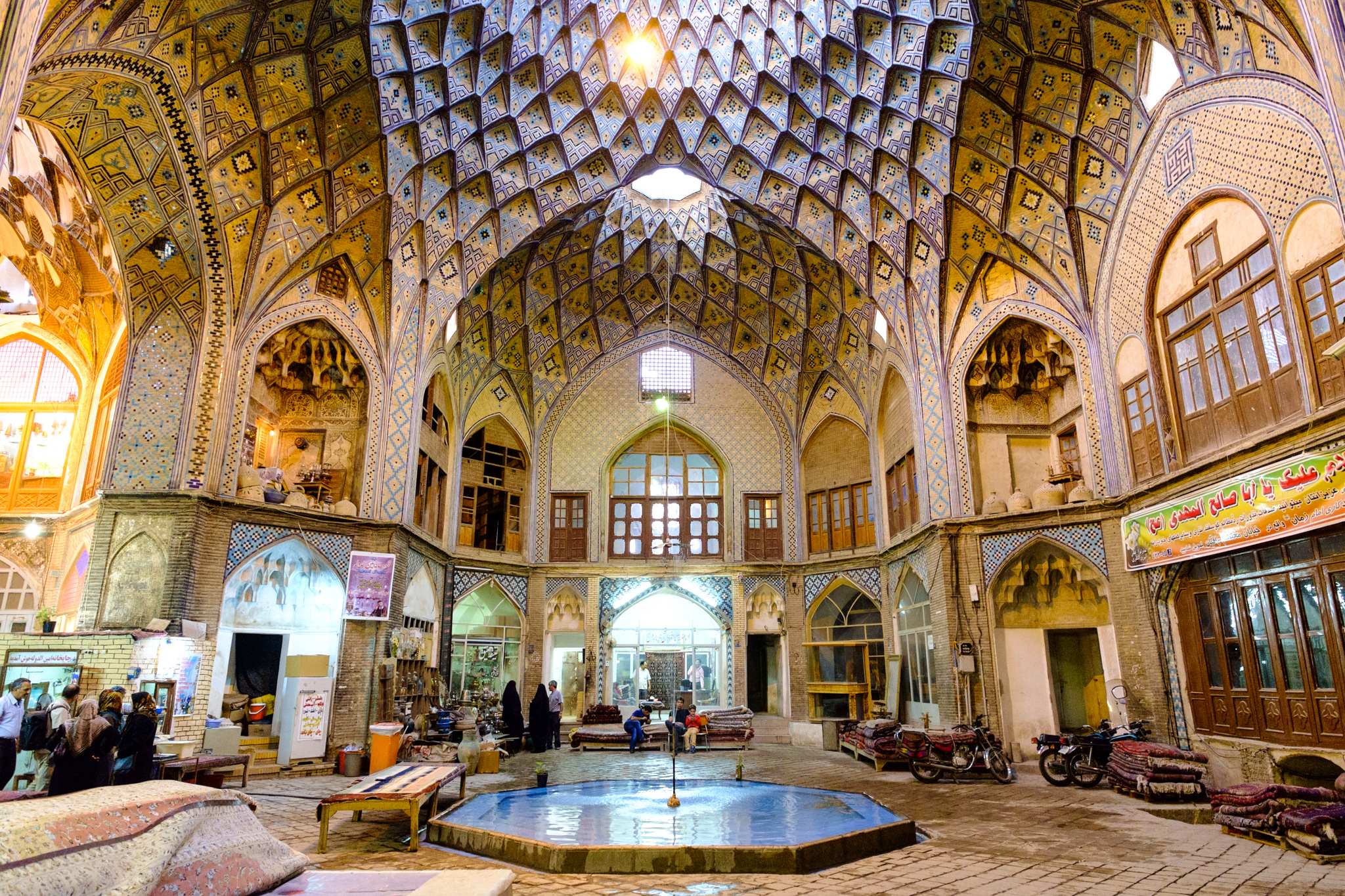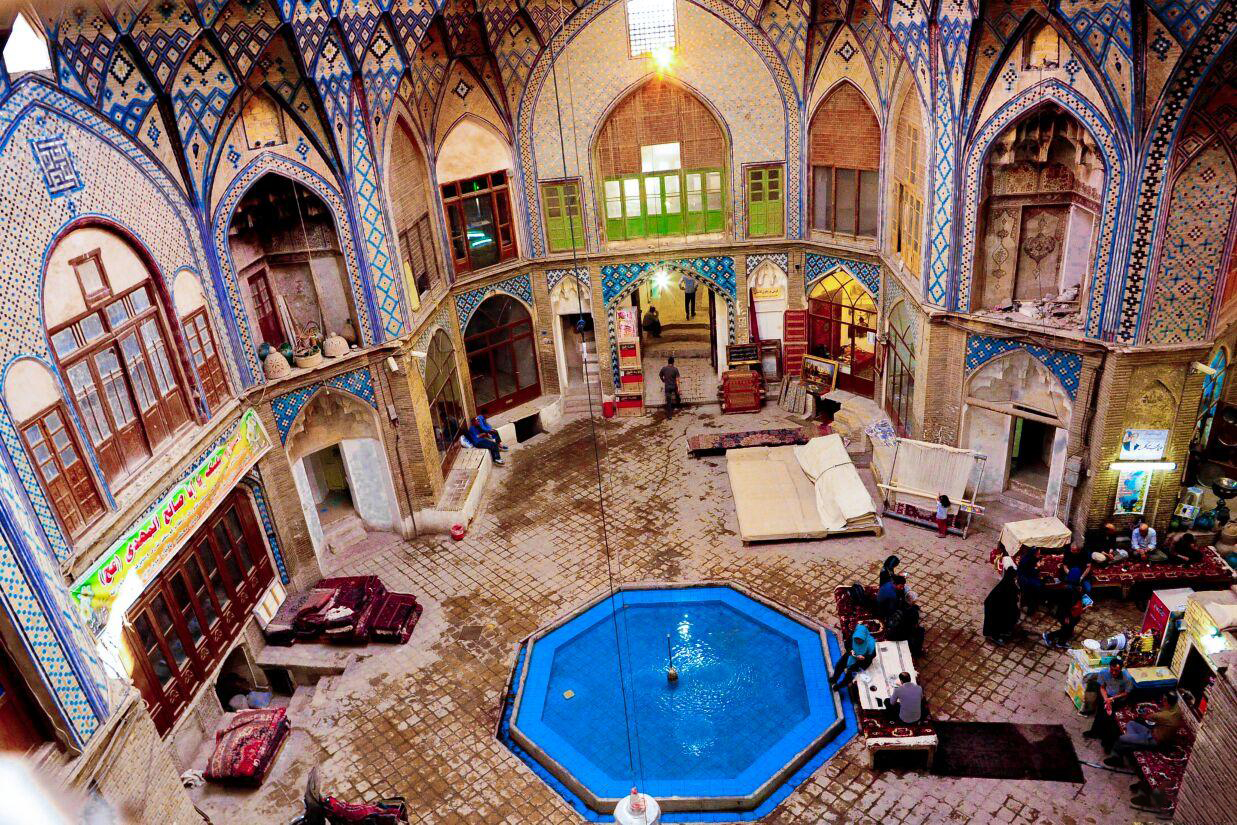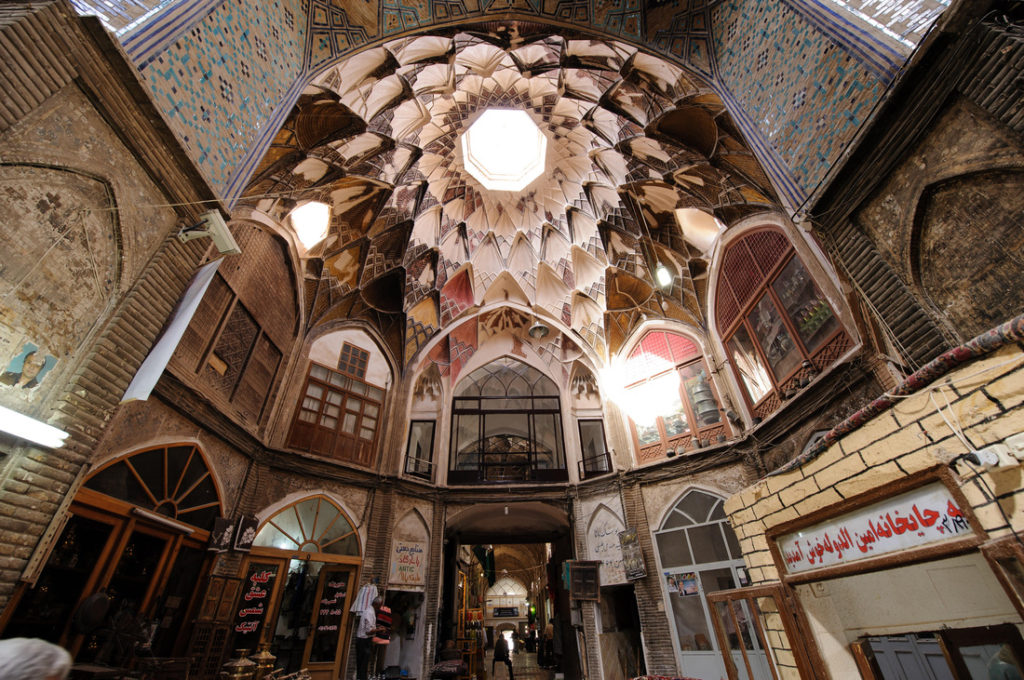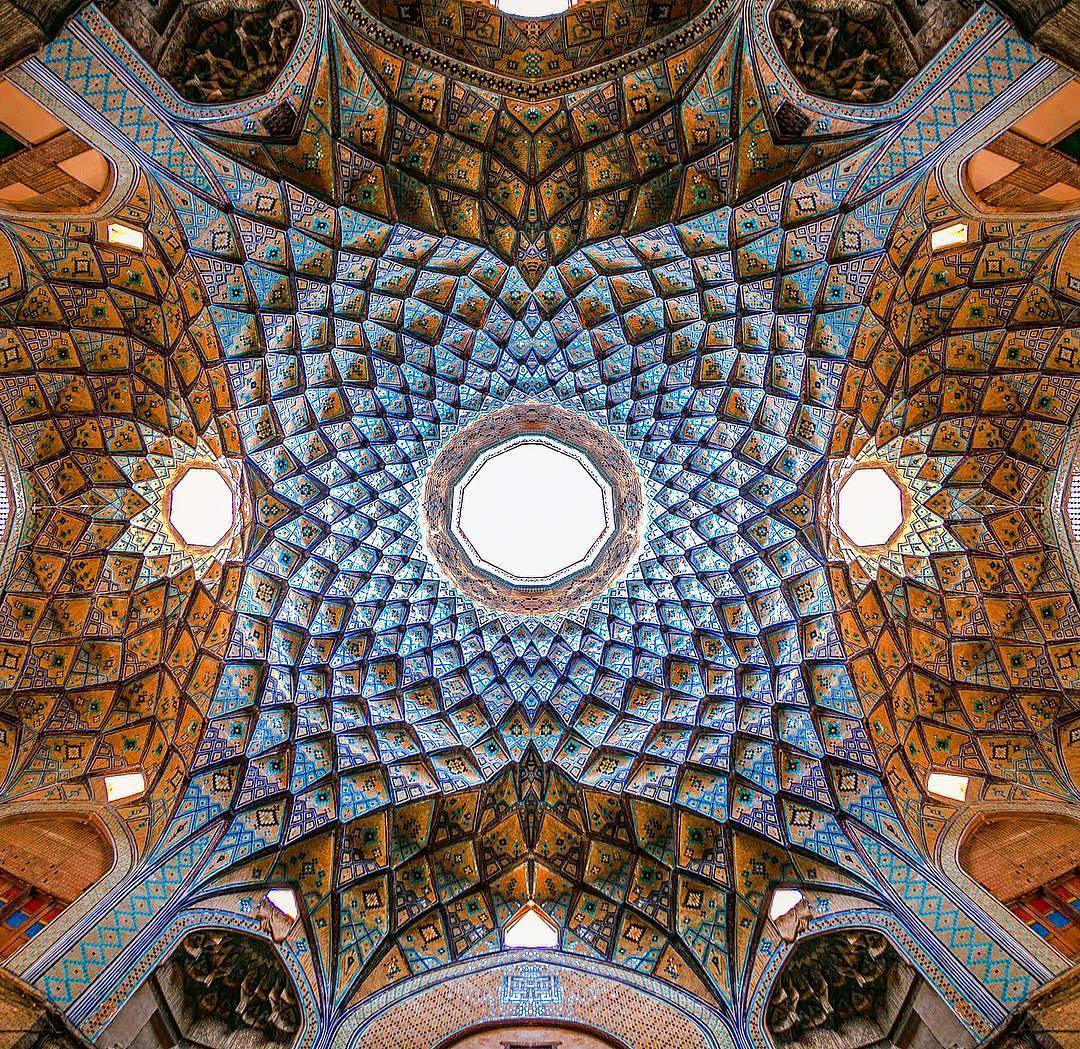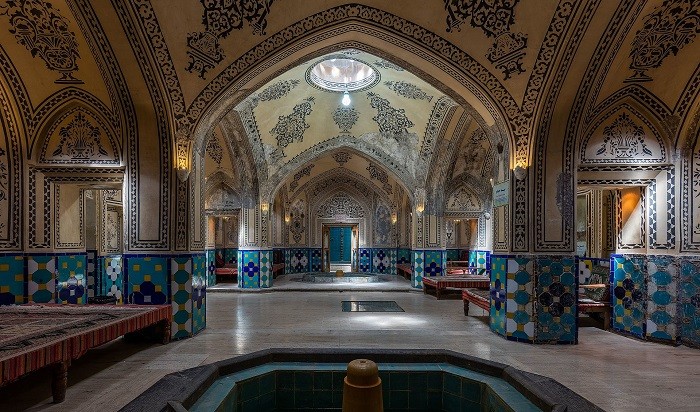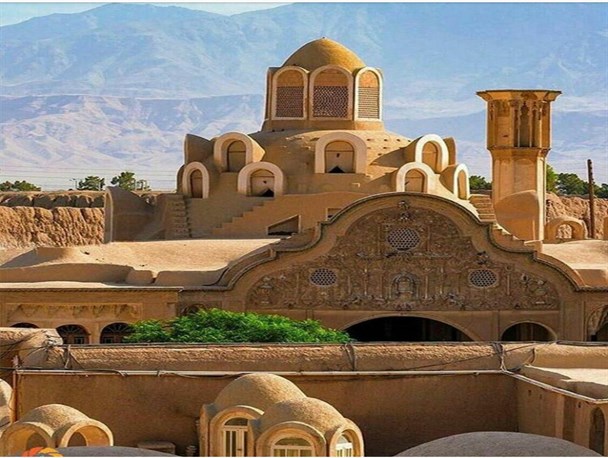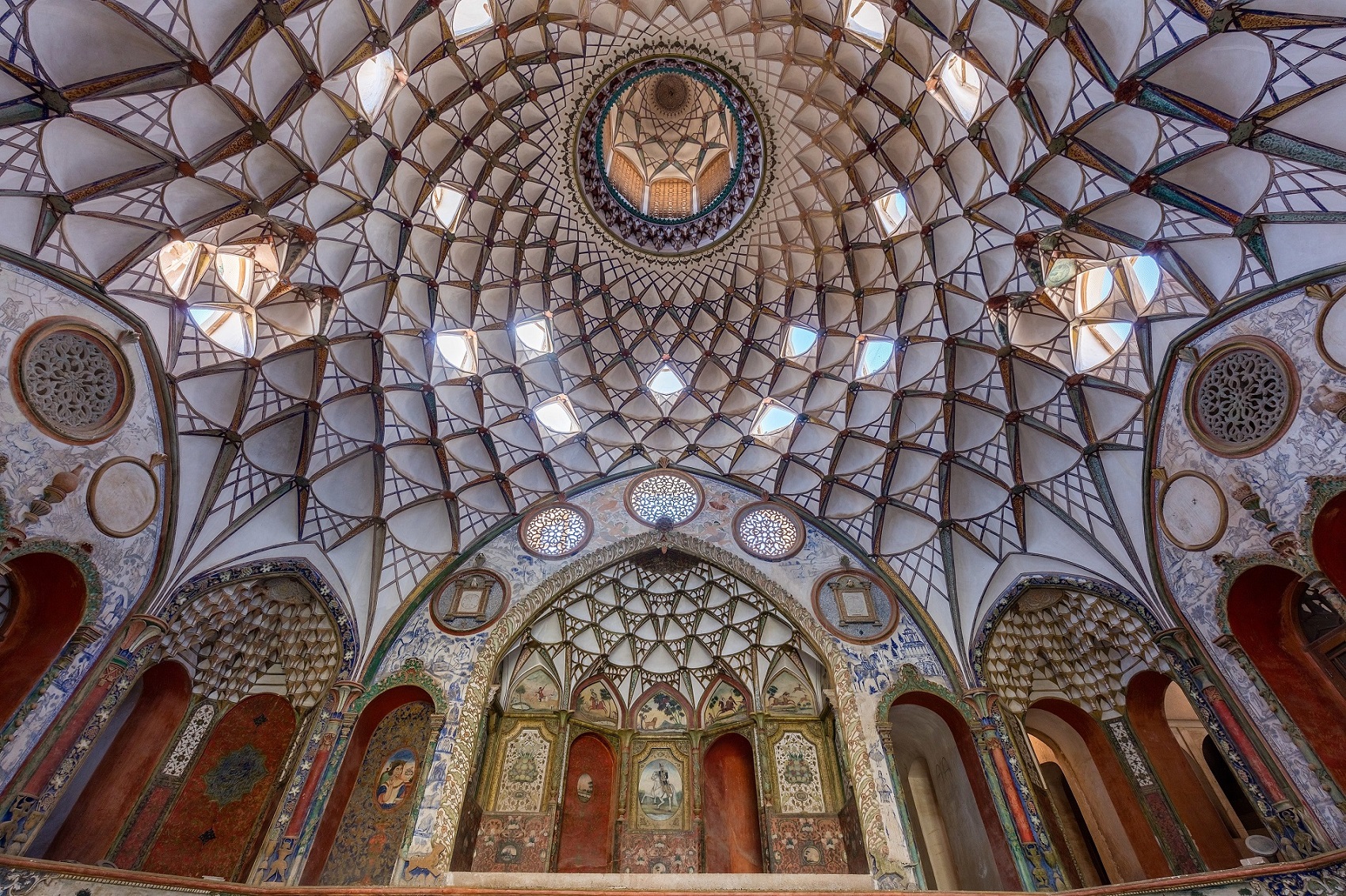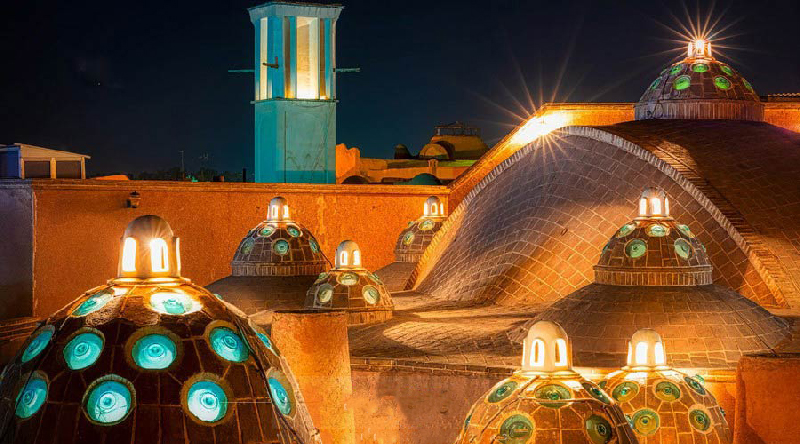Hightlight
-
 Air conditioner
Air conditioner -
 Car parking
Car parking -
 Coffee shop
Coffee shop -
 Non smoking
Non smoking
Bazaar of Kashan is the main bazaar of the city of Kashan, in Isfahan province in Iran. It is an old bazaar still in use today, built during the Seljuk dynasty and then renovated during the Safavids. The architecture of the Bazaar of Kashan is particularly recognized, notably for its Timche-ye Amin od-Dowleh section, where a large skylight was built in the 19th century.
This Bazaar was registered as one of the National Monuments of Iran in 1976. The traditional Kashan Bazaar is one of the oldest structures in Kashan. It starts from the middle of Baba-Afzal Street and ends around the Darvazeh-Dowlat district. The Kashan Bazaar has gained its importance due to its location next to the ancient trade routes and its organized architectural spaces.
History
During different times, this bazaar was remarkable for many travelers and historians. In a way, they were remembered by various descriptions and definitions. During the reign of Shah Abbas I, in the middle of the Grand Bazaar, four spacious bazaars, were beautifully and perfectly built and consisted of perfect tents (Persian: Dokkan) and caravanserais. During Shah Abbas I and his successor’s many visits to the city of Kashan, celebrations and evenings were held in the Grand Bazaar and the square connected to the Bazaar. It was one of the first places where the nightly celebrations took place.
Anthony Sherley, who accompanied Shah Abbas on one of his trips to Kashan, also spoke about the celebrations held at the Kashan Bazaar. Jean-Baptiste Tavernier, a French gem merchant, has described the Kashan Bazaar as extremely beautiful, with a large and comfortable Caravanserai, especially the one near Baghshah-Dowlatkhane. The Kashan Bazaar has been mentioned in various books, travel magazines, and poetry throughout history.
After an earthquake, in the 18th century, the Bazaar was ruined and many people, including shop owners and homeowners, died during this earthquake. As a result, many stores and property owners were deemed unknown. This Traditional Bazaar During the long reign of Fat’h Ali Shah Qajar, and following political stability and the development of local industries, large and interesting structures and buildings were added to the Bazaar.
Bazaar’s features
Bazaar of Kashan is a roofed bazaar whose main row is approximately three kilometers long and has many historical monuments inside. This complex has several mosques and madresehs, tombs, caravanserais, arcades, baths, and water reservoirs.
In the Bazaar, from Darvazeh-Dowlat (currently called Shahrdari Square or Municipality Square), to Feyz Square, in front of the Mosque, there are 120 shops and several Caravanserais have also been built at specific intervals to each other. Some parts of the bazaar belong to specific guilds, some of the most important are Coppersmith (Persian: Mesgari), Intinction, Goldsmith (Persian: Zargari), Shoe Store (Persian: Kafsh-doozi), Strings, ropes, and threads bazaar. The Mesgar-ha bazaar (Goldsmith’s Bazaar), had not lost its importance till today.
The main materials used in the market are bricks, raw clay, and mud mortar, and in addition, thatch and plaster are used as building cladding, and wood has been used in entrances, latches, arches, and valleys, all of which are suitable for the climate of the region conditions.
One of the spaces that make up the Kashan Bazaar complex is Chahar Suq (intersection). Chahar Suqs are the space that connects the two market passages. With high and majestic roofs, they have richer architecture and decorations. Among other Chahar Suq, Amin’s Chahar Suq and Mianchal are the most important ones.
Important series of shops (Rasteh) and markets of Bazaar of Kashan:
Each guild has chosen a specific market for the supply of similar goods and has created a market for itself, here we refer to the most important of these categories or markets:
- Coppersmiths Bazaar: Its original basis dates back to the Zandieh period, and the Gabra and Mirpanj caravanserais are located here.
“Coppersmith’s Bazaar (Mesgarha) in Kashan is one of the most spectacular places on earth with the constant sound of a hammer hitting the copper and the kilns turning red in the water,” said English Iranologist Edward Browne. - Qeysarie Bazaar: This bazaar dates back to the Zandieh period. The monument of Balabazar’s Mosque and Reservoir, Khan Bath, Haj Mohammad Sadegh House, New Caravanserai (caravanserai-e nuo), and Feyz are in this bazaar.
- Rangraz-ha (Where pigments sold) Bazaar: It is one of the remnants of Safavid period and Sabbagh’s water reservoir is located in here.
- Malek Bazaar: It dates back to the Zandieh and Qajar periods and the Tabrizi-ha Mosque is located at the end of this bazaar.
- Owrsi dooz-ha (Shoemakers) Bazaar: It was built in Zandieh era and is connected to Qeysarie Bazaar. Hall of Bakhshi is also located next to this bazaar.
- Chahar Suq of Mianchal: It is surrounded by Mianchal Mosque and Timcheh Amin Al-Dawlah on both sides. Its original date belongs to the eighth century AH.
- (Khayyat-ha) Tailors Bazaar: Located on the north side of Timcheh Amin al-Dawla and is one of the buildings of the Qajar period.
- Bazazha (Drapers) Bazaar: At the end of the bazaar, there is the Darb Zanjir and it is made in a square space with four bazaars separated from its main buidling. This building is one of the works of Zandieh period.
- Darb Zanjir Bazaar (Chained Door): The original building belongs to the Ilkhanate period and in the Zandieh period it has been restored.
- Goldsmiths’ Bazaar (Zargar-ha): It is one of the works of Zandieh period in where the Soltani Mosque is also located.
- New pass Bazaar (gozar-e nuo): It is located between Baba Afzal and Zargarha bazaar and the baths, mosque and water reservoir of Gozar-e nuo and Shah Yalan tomb are located in this bazaar.
- Timcheh Malek Al-Tojjar: It is located next to Timcheh Amin Al-Dawlah and is one of the works of Haj Mohammad Hussein Malek Al-Tojjar in the 2nd half of the 13th century AH.
- Timcheh Amin al-Dawla: This building is located in one of the central parts of the bazaar and belongs to the Qajar period, which was built on 2 floors with great length and width at the end of the 13th century AH, and the height of the water reservoir is also noteworthy.
This building is a place of mourning for religious groups during the days of mourning for Imam Hussein (AS). Mianchal market is also located here. It is one of the most beautiful and original buildings of the bazaar, which is located in Mianchal bazaar like a masterpiece of art, with a roof with beautiful decorations of elaborate rasmibandi (Kind of embellishment method) and wise bijouteries. The founder of this building was Farrokh Khan Ghaffari Kashi, nicknamed Amin Al-Dawlah, and its architect was Professor Ali Maryam Kashani.

